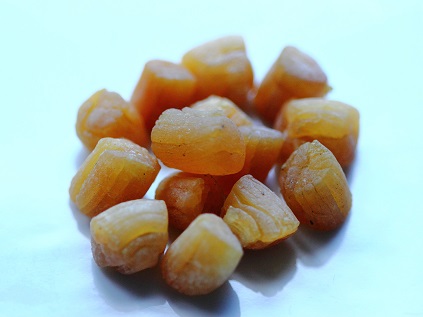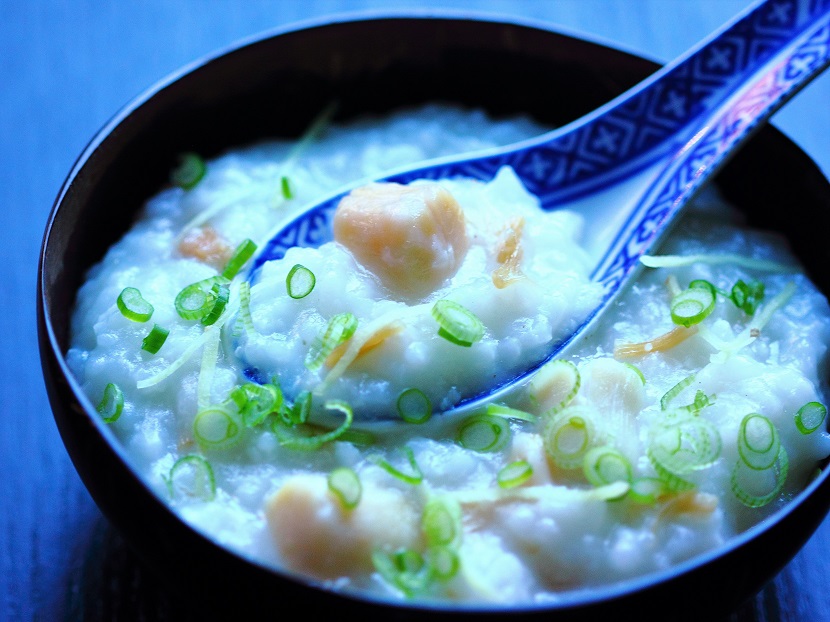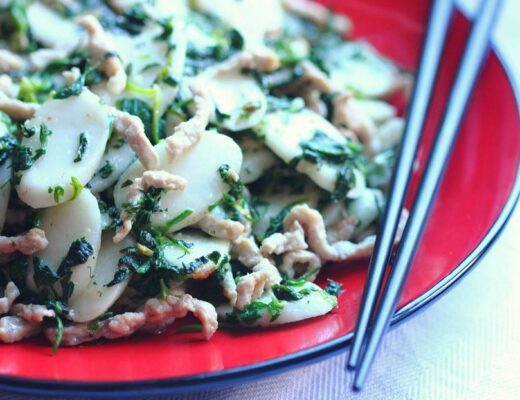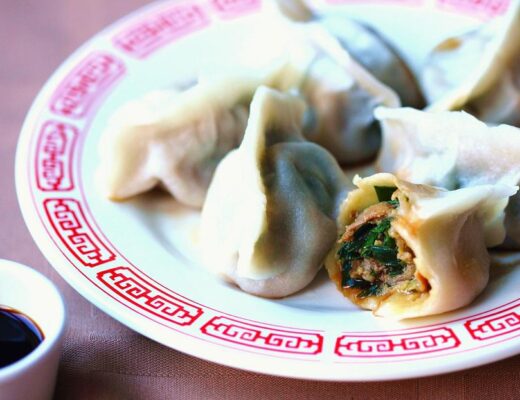Last Updated on October 26, 2020 by Simon Fan
Congee, or rice porridge, is the ultimate comfort food for many Chinese people and Chinese food aficionados.
Soft, smooth, creamy, and warming, congee shares the same traits as many other comfort foods around the world, such as polenta, mac and cheese, grits, oatmeal, and chileatole. We love them because they bring positive energy to our bodies and souls and make us feel rejuvenated.
Although many varieties of congee exist, the Cantonese-style congee—the smoothest and creamiest among all—is a standout. To achieve the desired consistency, short- or medium-grain rice is simmered in a large amount of liquid (stock or water) over a long time until the rice grains break down completely.
Congee can be cooked on a stovetop, in a rice cooker with a congee setting, or with a slow cooker. The ratio of liquid to rice can be 10 to 1 or higher if you want a very soupy congee. Or you can reduce the ratio to 8 to 1 or less for a thicker consistency, which I prefer.
There’s no limit to what can be added to congee. Just as making soup, you can add meat, seafood, vegetables, or anything that makes the congee taste good. If you go to a Chinese restaurant specializing in congee, such as Congee Village in New York City, you’ll be greeted with a dazzling array of choices.

One of the ingredients you often find in congee is dried scallop (干贝), also known as conpoy. Dried scallops play a very important role in Chinese cuisine. They lend intense aroma and savoriness (umami) to stocks, soups, stews, and sauces. A great example is the famous XO sauce.
The recipe I’m sharing with you here is inspired by a classic congee recipe using dried scallops and ginkgo nuts. After simmering with rice for an extended time, the dried scallops break down into threads and imbue the congee with their rich and distinctive flavor. I’m replacing ginkgo nuts with fresh bay scallops, to add a layer of scallop flavor different from that of dried ones to the congee.
Congee with fresh and dried scallops
Serves 2
Ingredients
⅓ oz (10 g) dried scallops
½ teaspoon Shaoxing wine
¼ cup (60 ml) water
½ cup (90 g) short- or medium-grain Asian white rice
4 cups (950 ml) water
12 fresh bay scallops
Pinch of salt
½ teaspoon Shaoxing wine
1-inch (2.5 cm) piece of peeled ginger, half grated and the other half cut into very thin strips
Salt and freshly ground white pepper
Zhenjiang (aka Chinkiang) vinegar
1 scallion, thinly sliced
Directions
- Place the dried scallops, wine, and water in a small heatproof bowl. Steam over high heat for 20 minutes. Break down the scallops into small pieces, and reserve the juice collected in the bowl.
- In a pot with a lid, combine the rice, water, dried scallops, and the reserved juice. Bring to a boil, then reduce to a gentle simmer. Cover and simmer over very low heat, stirring from time to time to prevent the rice from sticking to the bottom and adding some water if the congee gets too thick, until the rice grains break down completely, about 1 hour. If the lid you use doesn’t have a venting hole, leave the lid ajar during simmering to prevent the liquid from spilling over.
- Right before the rice achieves the desired consistency, combine the bay scallops with the salt, wine, and grated ginger. Let marinate briefly.
- When the rice is ready, add the scallops to the congee. Stir gently until the scallops are just cooked through, about 2 minutes. Season to taste with salt, pepper, and a few drops of vinegar. Serve garnished with the scallion and ginger strips.



